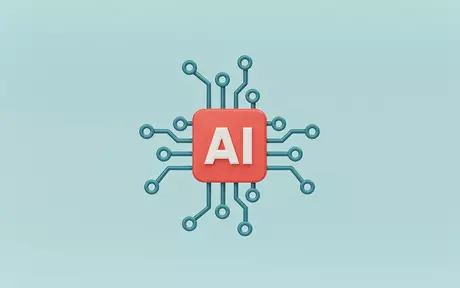
Remote onboarding tips for professional services
In the past, making a new employee feel like they’re part of an organization when they’re physically nowhere near it or its people was a tough task. Technology makes it more achievable today, but it’s not without its challenges. Here are some tips for remote onboarding.
Just a decade or so ago, onboarding remote employees would have been a disjointed process, prone to misunderstanding and error. Any new employee may well have felt isolated, underwhelmed and undervalued.
With recent advances in digital, cloud-based tools, it has become possible to conduct much of the onboarding process online. And not a moment too soon, as COVID-19 has accelerated the adoption of software with these capabilities, and remote onboarding has become the norm for the vast majority of new recruits.
Thankfully, with today’s intuitive, people-friendly enterprise applications, the online onboarding experience for new hires of professional services organizations (PSOs) can be fully immersive, interactive, inclusive, and seamless.
Optimizing recruit-to-bill with online onboarding
When it comes to optimizing onboarding in professional services, the most important KPI is the time it takes from the day you recruit someone today they start recording billable hours.
According to SPI Research in its 2020 Professional Services Maturity Benchmark (PSBM), the average time to recruit and ramp up new hires is around four months (121 days).
The way you handle these first four months is crucial. From the very first digital touchpoint your new hires have with you during the remote onboarding process, it’s crucial for them to feel welcomed, involved, informed, included, valued, and supported — not just by managers, colleagues and the organization as a whole, but by the technology they use.
If you get the online onboarding process right, you will be rewarded with productive, happy, loyal, and satisfied employees way beyond those crucial 121 days.
If you get online onboarding wrong, you risk reduced productivity and billable hours as other people take time out to support the hiring process, mentor new hires, or take on more work while the newcomers get up to speed. The knock-on effect of that can be high rates of attrition, and lower revenues.
The challenge of remote onboarding with legacy systems
The challenge is tougher still, as the expectations of candidates and employees have risen dramatically in recent years, meaning it’s become harder to attract, recruit, hire, ramp, engage, develop and retain talent.
Overcoming these challenges — especially during the recruit, hire and ramp stages — has always been difficult using on-premise legacy systems and applications that are not fit for people- and project-centric organizations. These disparate solutions restrict data visibility, are difficult to integrate, and constantly create extra manual work for skilled people.
During COVID-19, with most employees working remotely and the majority of new hires being onboarded remotely, this challenge has been exacerbated.
Tips for onboarding remote employees
The key to success when onboarding remote employees lies in culture, technology and people, as SPI says in PSMB 2020: “Talent is a primary focus and hot topic for all service firms. In an increasingly competitive talent market, top-performing firms are becoming laser-focused on their employment brand.
“Organizations are embracing technology to help reinvent the workplace with knowledge-sharing, team-building, transparency and collaboration at the core of their continuous learning cultures.”
With that in mind, my tips for improving online onboarding are to ensure that you:
- Have data in one place to enable people planning and analytics
- Embrace automated processes and streamlined workflows
- And deploy integrated talent enablement solutions
1. People planning and data analytics
The first thing every PSO needs for online onboarding, or managing remote workforces in general, is a single source of truth for all data. This is usually from a cloud ERP platform, with role-specific access to that data to enable people planning and analysis.
Centrally stored information from all systems gives you visibility over all HR data, from payroll and finance to attendance, leave, and absences, learning, performance and engagement. With centralized HR management, you can see and manage your people’s entire hire-to-retire cycle with a central control center and database.
You can pull and apply data from your ERP and human capital management systems during online onboarding. This gives you actionable, combined insights into cost, value and performance across your organization, enabling better accuracy and less duplication for more efficient processes.
This also enables you to make better-informed people-based decisions, including the deployment of remote employees, so you always have the right people doing the right tasks.
2. Automated processes and workflows
Next, streamlining workflows has always been important for improving efficiency, and onboarding efficiency is no different, especially today, when onboarding remote workers.
Not only does automating processes and repetitive tasks reduce error and boost productivity during online onboarding, but it also means HR staff only intervene when necessary — freeing up valuable time for teams to focus on more important, strategic work.
Recent research into people-led transformation shows that today’s users want tools and systems that (in this order):
- automate processes to help them deliver more high-value work
- enable remote and flexible working
- improve their peer-to-peer collaboration and overall productivity
- help them make informed, data-driven decisions easier
- deliver mobile access to some applications to allow them to work on-the-go
By providing intelligent, automated workflows and self-service HR tools, you can reduce manual processes, duplications and human error, as well as improve time, attendance and leave management, making it easier for employees to request and view absences.
Giving new hires remote access to these streamlined, collaborative, self-service capabilities from the outset helps make them feel empowered, included and supported. It also shows you are prioritizing People Experience, which makes them feel valued.
3. Integrated talent enablement
Finally, to improve online onboarding, every PSO needs integrated talent enablement modules. These digitize how you optimize the training, learning, performance and engagement of your new hires during remote onboarding and beyond.
A user-friendly learning management solution can help you:
- Build and manage custom courses to share knowledge more effectively
- Support online, offline and blended learning
- Recognize each person’s achievements with easy certification management
An integrated employee engagement application can help you:
- Detect opportunities and prevent issues by sending out mini-surveys on the state of your culture — especially important during remote onboarding
- Easily track engagement data and spot trends across the organization or against different demographic attributes
And a performance management module can help you:
- Ask, give, aggregate and use both internal and external feedback throughout the online onboarding process
- Translate your company's strategy into transparent objectives and align them with the goals of the new hire
- Manage worthwhile conversations from onboarding interviews to performance reviews
- Uncover high-performers and make sound strategic decisions with data aggregation and analysis
These capabilities can make new employees feel more involved and engaged, as well as being more likely to take advantage of career advancement opportunities. They may also be more likely to recommend your firm as a great place to work.
Solving the talent puzzle
Following these tips for onboarding remote employees can help you solve the talent puzzle. The results should include better employee satisfaction, loyalty and productivity, plus lower levels of attrition, and increased revenue from every employee, consultant and project.





